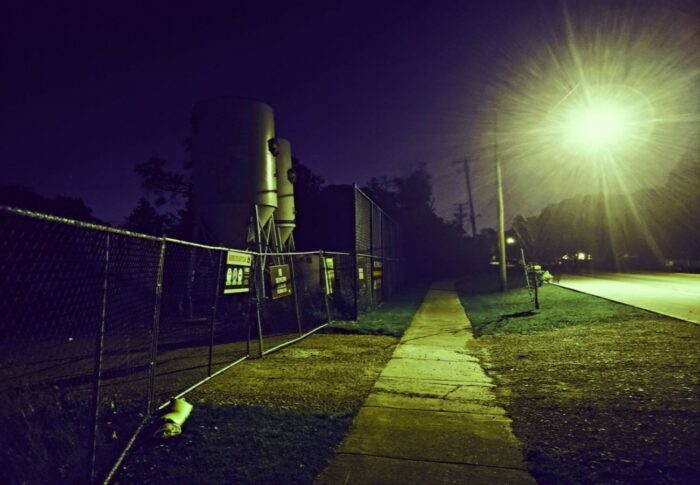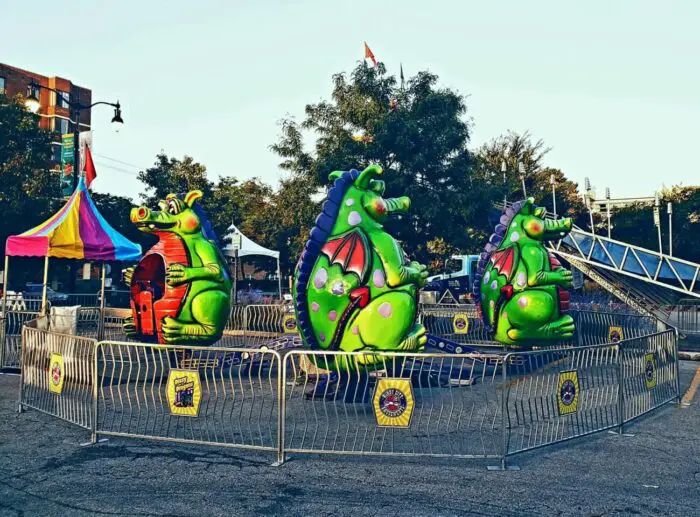Vanishing lies at the heart of the anthology Tell Me When I Disappear. It portrays the disappearance not only of people but illusions of empathy and human significance. Furthermore, this collection of seven short stories by Glen Hirshberg is meant to be an atmospheric assortment of elegiac pieces. Sometimes a glimmer of that intention shines through. However, more often, it’s an anthology of lost opportunities as good ideas bear little fruit.
The opening narrative “Black Leg” exemplifies this excellently. The setup is a documentarian who, while stuck doing jury duty, meets someone named Bulan. This fellow rather poorly relates ghost encounters he’s experienced at work. Though the documentarian initially ignores Bulan, the prospect of quick cash filming ghost hunter footage compels the narrator to seek out the supernatural. Things take a predictable turn for the worst, and while I won’t spoil the end, some variation of it is in two dozen found footage films.

Now, Bulan’s recitation is well written. The fact he’s a bad storyteller is great for the plot because it heightens the narrator’s desire to escape from him. It also provides intriguing implicative details rather than expository dumps. The problem is the narrative follows a well-worn trail. Knowing where it’s going makes the read tedious, especially since there’s no twist or sufficient originality to erase that boredom. Consequently, rather than a firework of frights, “Black Leg” builds to a flash in the pan.
This is a common problem throughout Tell Me When I Disappear. Something spooky happens then the story races to the end. While there could be an argument, this is supposed to enhance the sense of suddenness, that there’s no time to react to what’s occurred, it often feels like jumping to the end too soon. Consider, if Pennywise appeared in It, killed someone, swiftly vanished then a page later the whole story ended. That’s how the bulk of this anthology feels.
Again, there is a case to be made that that’s the point. Many main characters here seem to be avoiding the horrifying revelations of their unreal encounters. One or two stories end with people actively fleeing their experience. The problem is it undermines one kind of horror while straining to imply something more horrific.

In “A Paradise to Live in or See” the main character is so overjoyed to have her daughter back, the hideousness actively unfolding around her is quickly ignored. Granted, it works best in this particular piece, the horror becoming less important than the human drama, but the anthology is so busy trying to make the point that human existence is the real horror, it can’t help inducing an eye roll now and again. The reason for that is Hirshberg clearly seems capable of a better-written exploration of these concepts.
Consider the titular “Tell Me When I Disappear,” about an aging teacher endlessly rambling about the desert and their burgeoning midlife crisis then the briefest flare of horror—which is fabulously unreal, yet everyone immediately ignores the supreme weirdness of what happened—someone vanishes, and the story deflates into defeatist cosmic nihilism. There’s a truth to the story, and the narrator is well-written, but it plods along to the sparks of a scare and then ends.
Tell Me When I Disappear is a collection of stories that want to say something insightful about the human condition—the fearlessness of a mother’s love, the vengefulness of embittered loss, and the alien nature of others, etc. Yet, at its worst, the book doesn’t trust the reader to get the point. So instead of subtle subtext fueled by frights, it ladles the point into the audience’s lap like lukewarm soup, an experience not everyone will enjoy. At its best, it comes across as spooky stories more interested in making observations about existence than scares. That’s when stories feel finished.

“Devil” is more like the start of a larger narrative. The whole thing reads like a setup. Tourists in Tasmanian are regaled with the campfire tale of how several trains disappeared in the past. The mysterious circumstances of these vanishings not only build creepy intrigue but seed the notion of a larger story surrounding what’s going on. Hints of impending horror are peppered throughout. Unfortunately, right at the crescendo, nothing happens. The horrors of the past are left in the past, and whatever connection they have to the present and main characters is never really explored. It’s basically the setup of a creepy urban legend without any payoff.
Some may see “Devil” as an attempt to craft a mystery that leaves the audience wanting more. The mystery of the unknown inspires dread, but it just feels like a lost opportunity.
Pacing tends to be another stumbling block throughout Tell Me When I Disappear. This is easily observed in the story “DestinationLand,” which starts out strongly. The setting is well established early on in some wonderfully written paragraphs, and a general sense not only of characters but the place is clearly defined. This theme park full of old trains is a location guaranteed to be inhabited by ghosts. Yet, the narrative interrupts its own flow to change gears.
At the top of one page, the reader is told the narrator’s notions about reality shifted when the Wong girl arrived at the park. Then there’s nothing about her for nearly seven pages. When she does arrive, it’s another page detailing her day at DestinationLand before finally getting to anything suspenseful.

The problem is that throughout this nothing really occurs. It’s just the description of a routine day at the park and the giddy exploits of a child enthralled by trains. The only reason to expect anything interesting might happen is that this is a Cemetery Dance Publications by a horror author. The mention of ghosts in the opening line almost seems metaphorical until suddenly there are actual ghosts.
Picking apart the poorly defined motives of characters in “Slough” and “Jetty Sara” would just be nitpicking. The latter particularly is meant to have an air of mystery, some unkindness has spurred the water witch into action. Anyway, what “Slough” suffers from that is somewhat irrelevant because that’s not the point of the story. This borderline Lovecraftian horror about the strange, unsettling denizens of a coastal town is more about the fear of others and never being able to know them than exactly why its main character felt compelled to go there.
The overall point is that Tell Me When I Disappear is an imperfect look at horror stemming from human flaws. Stories like “Black Leg” and “Jetty Sara” explore the hideous truth about how little people care for one another, and the dismissiveness of society. “A Paradise to Live in or See” shows that even the most grotesque monstrosity can’t conquer the courage of a mother protecting her child. The titular story posits the loss or disappearance of any human being as nothing more than the natural consequence of existence.
These are conceptually fabulous, frightening ideas. Many of which Glen Hirshberg seems capable of exploring. However, the way they’re served up lacks the spice to give them much bite. Those craving something new will find Tell Me When I Disappear helps time vanish but offers little else.
Tell Me When I Disappear arrives April of 2023 courtesy of Cemetary Dance Publications.



